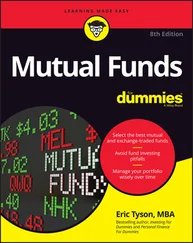In fact, a possible Pit Bull (or Pit Bull mix or Boston Terrier mix — nobody knows for sure) named Stubby emerged from World War I as a national hero. Stubby was the unofficial mascot of the 102nd infantry, and when it came time to go overseas, the men smuggled him on board. Despite no training or experience in battle conditions, Stubby braved intense shelling to comfort wounded soldiers lying in the crossfire. He eventually served for 18 months and participated in 17 battles. Stubby repeatedly warned his regiment of incoming mortar shells and mustard gas attacks, and once he even prevented a spy from escaping. When Stubby was wounded, he played the role of therapy dog, cheering hospitalized soldiers. Even while recuperating in Paris, he was credited with saving a child from being run over.
Stubby was decorated by General Pershing, awarded the rank of honorary sergeant, and received by three presidents. He led more parades than any dog in history. Upon Stubby’s death in 1926, his hide was mounted over a plaster form of his body, with an urn containing his ashes inside. He was displayed wearing a medal-covered coat, first at the Red Cross Museum and then at the Smithsonian Institute. Until recently, Stubby was largely forgotten, packed away in a crate in a back room of the Smithsonian. But in 2018, an animated movie about him renewed interest and Stubby is back on exhibition at the Smithsonian National Museum of American History.
The next Pit Bull to capture America’s heart was Petey of The Little Rascals and Our Gang movie fame. Actually, Petey had already starred in several Buster Brown movies (as Tige) before becoming one of the most popular Rascals of all time. When the original Petey died, he was replaced with another Petey, an American Staffordshire Terrier registered as Lucenay’s Peter. Whatever his role, Pete the Pup exemplified the Pit Bull in his role as a roguish buddy, furthering the breed’s appeal.
Popular with families and welcomed throughout neighborhoods, the Pit Bull basked in his reputation as a fun-loving and patient member of the family.
This is not to say that things were always rosy, however. As far back as the late 1800s and early 1900s, breed bans were put in place against “bulldogs,” as they were called in several cities, including Washington, D.C. Although people tend to think of Pit Bull attacks as a more recent trend, around the turn of the twentieth century, they had already been in the news for killing people, with many reporters calling for their banishment.
One of the earliest cinema dog stars was Petey, of Our Gang. Petey was modeled after Tige, Buster Brown’s cartoon dog. Like other Our Gang members, Petey’s life and death is surrounded by rumors. Some reliable sources say that the original Petey (played by a dog named Pal) was poisoned after about two years as a Little Rascal and replaced by his son, named Pete — explaining why Petey’s painted-on circle around one eye switches sides partway through the series. Another piece of Petey trivia: He was the first Pit Bull to be both UKC and AKC-registered.
Overcoming Pride and Prejudice
Dog breeds often wax and wane in popularity, and so it has been with the Pit Bull. After World War II, the Pit Bull gradually faded from the public eye and the family home. True devotees, however, remained as loyal to their dogs as their dogs were to them. Some of the breed remained as steadfast pets, others continued as game pit dogs — and many performed both roles admirably.
Dog fighting, although illegal, continued to be carried out with minimal interference from law enforcement until the 1970s, when the American Dog Owner’s Association (ADOA) formed to lobby against dogfights. The ADOA was successful in bringing public attention to the pit — helping to push dog fighting into the shadows and propelling pit dogs into an unflattering limelight.
As with many well-intentioned laws, some unforeseen problems accompanied the crackdown on dog fighting. Dog fighting continued; it just went underground. Its illegal nature attracted patrons whose major area of knowledge was in pay-offs and threats, not Pit Bulls. Knowledgeable dogmen (the term for serious breeders of fighting Pit Bulls) could no longer distribute information about training methods, leaving newcomers to dog fighting — who often believed scare tactic propaganda — to experiment using cruel practices. They trained the dogs using stolen puppies and dogs as “bait dogs” in an attempt to encourage them to kill, fed them gunpowder in an attempt to make them mean, and hired strangers to beat the dogs with clubs in an attempt to make them aggressive to strangers. Not surprisingly, their dogs seldom succeeded at matches, and they were often discarded. The harm done to these dogs made them difficult to place as pets, and the harm done to the breed’s reputation was immeasurable.
A certain segment of the population has always wanted to have the toughest dog on the block. Various breeds have filled these shoes throughout the years, and beginning in the early 1980s the Pit Bull was on its way to becoming the “tough guy” poster dog.
Although illegal pit fighting still exists, Pit Bulls can legitimately compete in conformation, obedience, agility, and weight pulling competitions, and they are proving themselves helpful as boar hunters, search and rescue dogs, therapy dogs, and most of all, companions.
Over the years, Pit Bulls have gradually become more and more popular. But popularity isn’t all it’s cracked up to be. In fact, it can be a big problem for any dog breed. The popularity of dog breeds is driven by fads. People copy celebrities who own a certain breed, neighbors and friends who own a breed, dogs they see in TV shows and movies, in advertisements, and on social media. With more than 200 breeds to choose from (not to mention an endless number of mixed-breed dogs available), dogs from only about 20 breeds make up more than half of all the dogs in North America. These super-popular breeds change through the years. And when people lose interest in a breed, those dogs can end up being abandoned to shelters.
It’s hard to track the popularity of Pit Bulls because most Pit Bulls aren’t registered with any dog registry. What we can do is look at statistics. According to Animals 24-7 ( www.animals24-7.org ), a group that, among other projects, tracks dog statistics, Pit Bulls made up approximately 8 percent of all dogs offered for sale in 2019, which translates to approximately 1.3 million Pit Bulls. That number doesn’t include the 31 percent of all dogs offered for adoption, which amounted to an additional 1 million Pit Bulls available in 2019. Together, Pit Bulls made up almost 12 percent of the dogs looking for a home that year. Overall, Pit Bulls made up almost 6 percent of all the dogs in the United States, or about 4.5 million Pit Bulls.
According to Animals 24-7, Pit Bulls and Pit Bull mixes make up about 33 percent of shelter intakes nationwide, with even higher numbers (up to 65 percent) in large cities. In fact, almost one-third of all Pit Bulls eventually find their way into shelters — a far higher percentage than any other breed in history. Why? For one thing, too many people get a Pit Bull because it’s the in-style dog of the moment, without considering the special responsibilities that come with owning this breed. Also, Pits especially appeal to younger people, who may not have the maturity, experience, or resources to properly care for a dog of any breed, let alone a Pit Bull.
Famous Pit Bull lovers include Jessica Alba, Jennifer Aniston, Fiona Apple, Fred Astaire, Kevin Bacon, Lake Bell, Jessica Biel, Rachel Bilson, Humphrey Bogart, Tom Brady, Adam Brody, Sophia Bush, Kaley Cuoco, Jack Dempsey, Thomas Edison, Adrian Grenier, Tom Hardy, Katherine Heigl, Liam Hemsworth, Josh Hutcherson, Marc Jacobs, Helen Keller, Miranda Lambert, Madonna, Cesar Millan, Judd Nelson, Pink, Rachael Ray, Norman Reedus, Theodore Roosevelt, Alicia Silverstone, Jon Stewart, Channing Tatum, Danny Trejo, Wil Wheaton, Betty White, Woodrow Wilson, and Serena Williams.
Читать дальше












